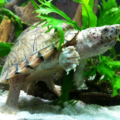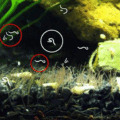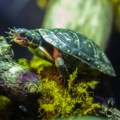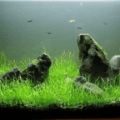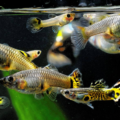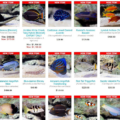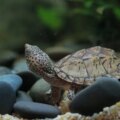The Western Painted Turtle is a subspecies of Painted Turtle that is perfect for aquarists of all levels. The expert tips in this guide prepares you to keep Western Painted Turtles in a home aquarium or outdoor pond, Including identification, tank setup, healthcare, breeding instructions, and much more!
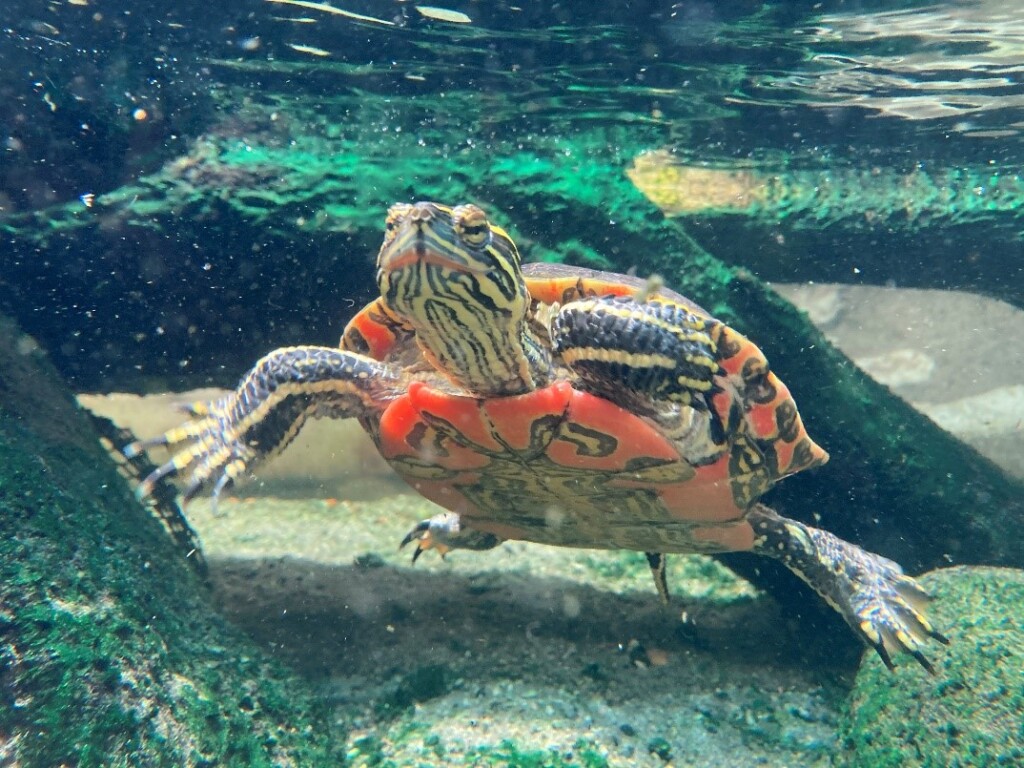
Introduction
The Western Painted Turtle is a true vision of a colorful freshwater turtle that stands out amongst the Chrysemys picta subspecies. It’s also the largest, with a vivid red and yellow plastron.
However, this Western Painted Turtle profile will show you that its beauty and size don’t affect its personality. Chrysemys picta bellii has a calm nature and is adaptable to home aquariums or outdoor ponds.
Author’s Note: Check out our post The 14 Types of Freshwater Turtles for even more great semi-aquatic pets!
Keep reading this Chrysemys picta bellii overview for insights on maintaining this bright species away from its natural habitat.
Tank Setup for Western Painted Turtles: Room to Swim and Breathe
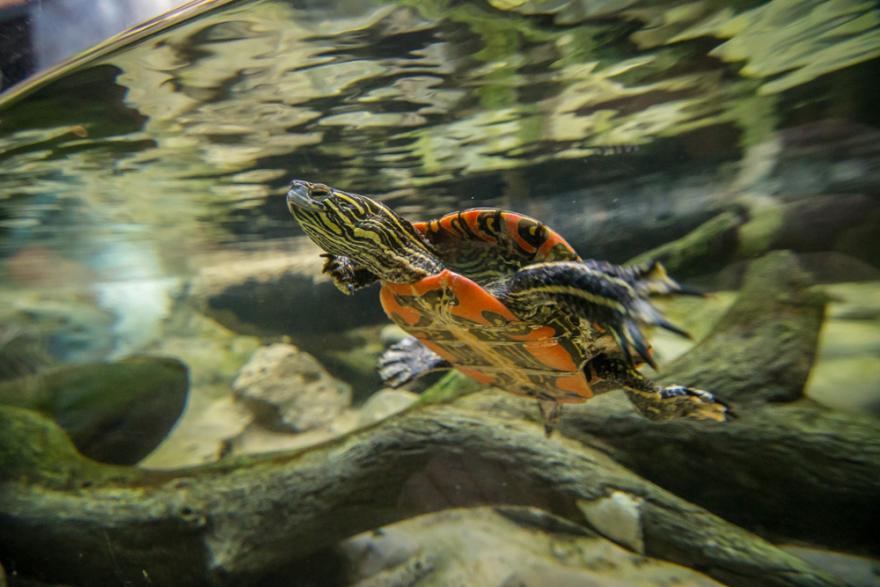
We’ll design the ideal Western Painted Turtle tank setup considering the following factors:
- Size
- Dry basking zones,
- Water quality and depth
- Lighting
- Decor
Tank Size
A single adult grows to 2.5 – 10 inches (6 – 25 cm) and needs a minimum of 75 gallons for ample swimming space. Choosing the right tank size is of the utmost importance because this is where your Western Painted Turtle will spend all of their time!
So whether using an outdoor pond or tank ensure that their enclosure is large enough to accommodate enough water and still have a dry basking space.
Water Parameters
Use these specific painted turtle water conditions to provide a healthy environment for your pets.
| Temperature | 74–80°F |
| pH level | 6.5–8.0 |
| Hardness | 180 – 200 ppm |
Author’s Note: Knowing Why your turtle tank water turns green? (Cause & Fixes) will be useful in the upkeep of your turtle’s enclosure.
Western Painted Turtles are known to be messy, so a powerful filtration system is essential to keep their water clean and safe. These turtles produce a lot of waste, which can quickly foul the tank without proper maintenance.
For optimal results, consider using a high-capacity canister filter—either single or dual-stage setups work well. For more detailed recommendations, check out our guide to the top 7 filtration systems designed specifically for turtle tanks.
Basking Area
Prepare your aquatic turtle’s basking area with a stable dry dock and overhead UVB lighting to strengthen its shell health. This will also regulate the turtle’s temperature after swimming in cool waters for long periods.
Aquascaping
You can express your creativity with aquascaping, but ensure you add elements of your pet turtle’s natural habitat to help them adjust to life outside the wild.
To enrich the tank, use large smooth rocks, scenic driftwood, floating logs, and aquatic plants. Ensure the aquatic plants include edible flora to boost their health and encourage interaction.
There’s no wrong here when designing your aquascape as long as you keep your pet’s safety and the above considerations in mind. Next up, we detail the Western Painted Turtle’s temperament, another important aspect of their care.
Temperament and Behavior in Captivity
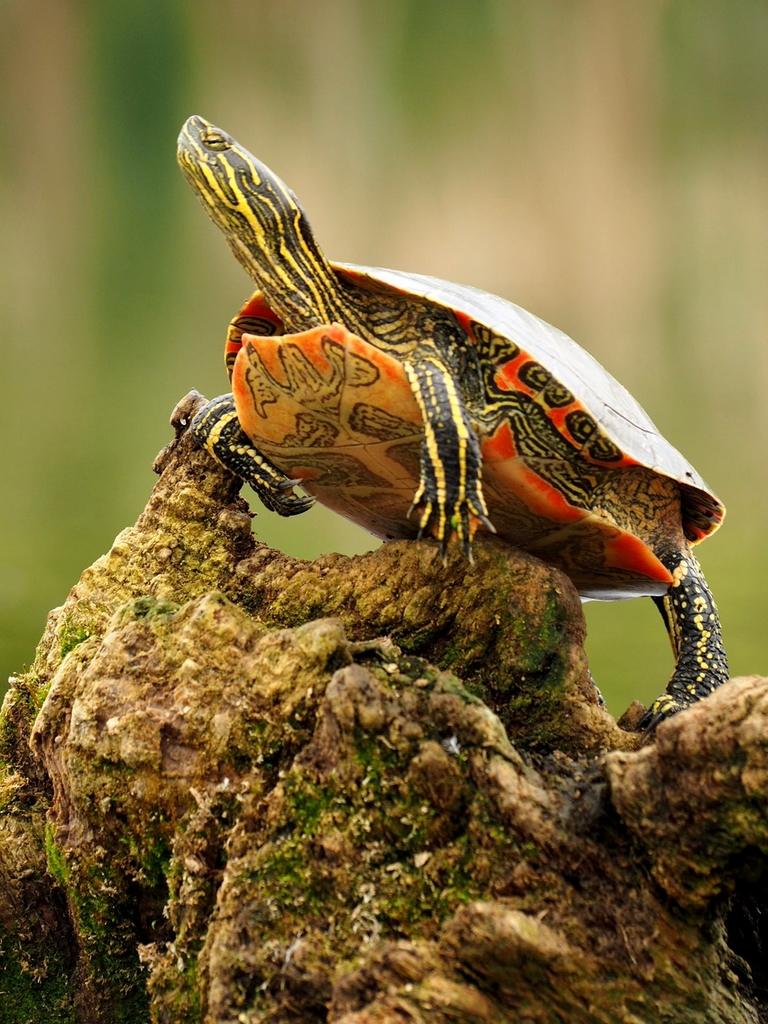
Western Painted Turtles are generally an active, curious, and friendly aquatic turtle species. Owners, keepers, and onlookers will enjoy the Chrysemys picta bellii activity best when they build bonds with them.
These pets beg for food during feeding times and show excitement for their owners when they approach their enclosures. Western Painted Turtles also have a unique diurnal basking behavior, meaning they sunbathe in the morning.
Western Painted Turtle behavior traits make them lovable pets as their high activity levels makes it common that they will interact with their owners and other tank mates.
Author’s Note: Check out the 8 Best Toys for Pet Turtles to Play With for more ways you can interact with and stimulate your pet turtle.
Suitable Tank Mates for the Western Painted Turtle
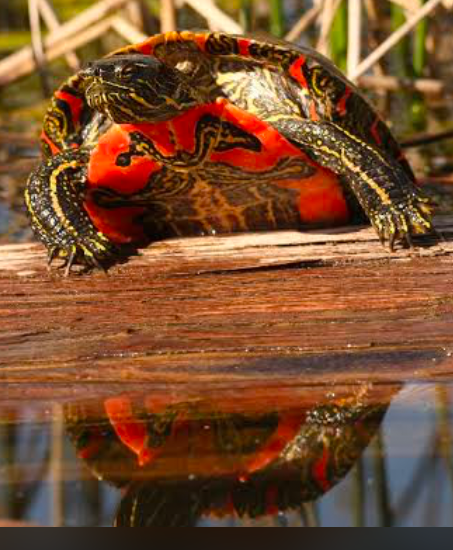
To build a peaceful aquatic turtle setup, you must choose compatible tank companions by focusing on non-aggressive, similarly sized species with the exact environmental and dietary needs.
Compatible Species
Some compatible tank mates for Chrysemys picta bellii include large snails like Mystery Snails, peaceful fish (if any), or other painted turtles like the Southern, Eastern, and Midland Painted Turtles.
Tankmates to Avoid
Avoid small, slow moving fish and aggressive reptiles that can stress your pets and become predators or prey. Also, note that overcrowding can make a compatible pair incompatible because of discomfort and fights over territory.
To avoid territoriality and aggression, you can manage painted turtle compatibility with other species by giving them large tanks with separate basking platforms.
Feeding Guidelines: What Keeps Western Painted Turtles Thriving
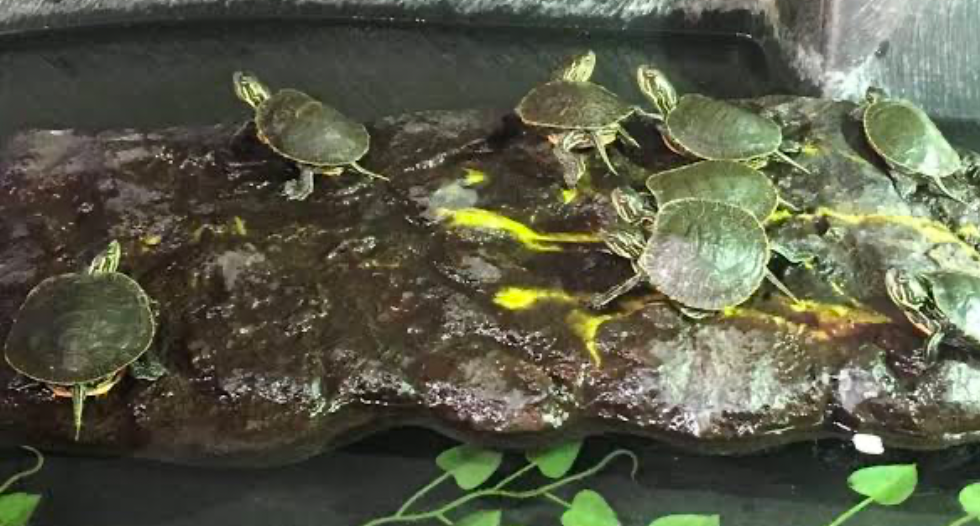
Provide omnivore turtle nutrition containing proteins and plants. However, adjust the portions as your Western Painted Turtle develops because juveniles need more protein while adults shift to more plant-based foods.
Diet Variety
This Chrysemys picta bellii diet plan contains staples and occasional supplements for your pets.
| Staples | Commercial turtle pellets and aquatic insects for juveniles | leafy greens and vegetables for adults |
| Supplements | Fruits like berries and calcium sources |
Author’s Note: Check out our Complete Guide To Turtle Food: What To Feed And Why It Matters for detailed food recommendations!
Feeding Frequency
Western Painted Turtle feeding routines vary depending on the pet’s age. Juveniles need daily food for development, while adults may eat every other day between 3 – 4 times weekly.
Calcium Source
Add cuttlebone or calcium powder supplements to maintain your Western Painted Turtle’s shell health.
Breeding Behavior and Hatchling Care
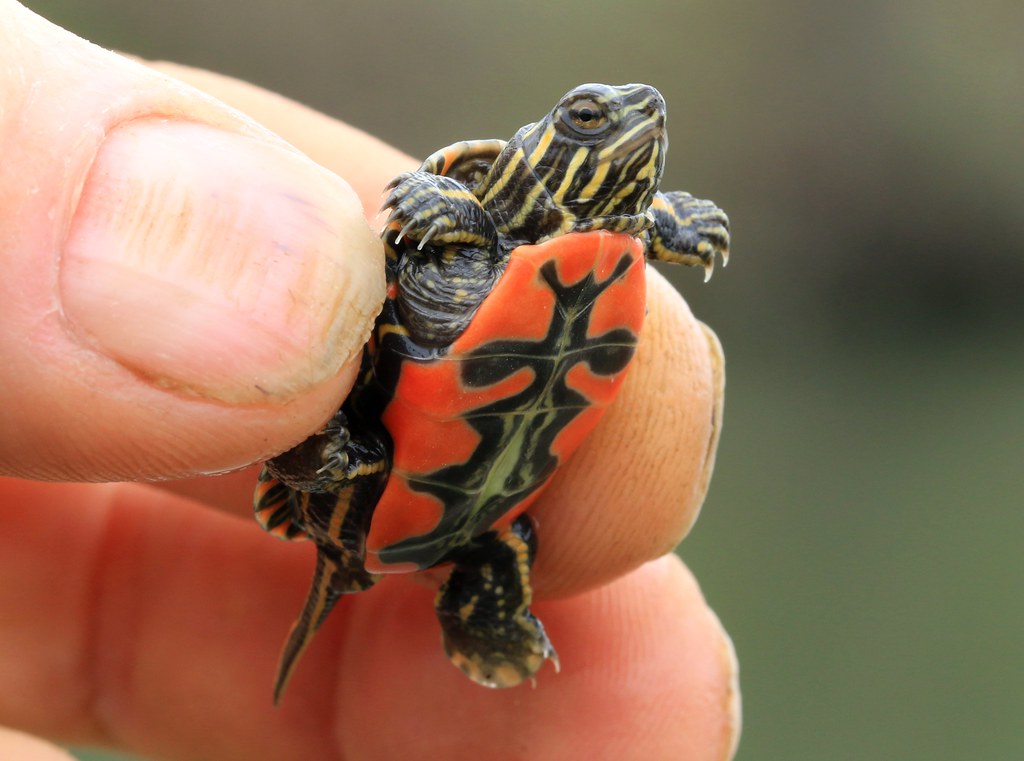
Use these essential tips for breeding Western Painted Turtles. They have seasonal breeding times, egg-laying preferences, and specific care requirements for hatchlings.
Breeding Season
In the breeding tank, simulate late Spring and early summer by making heavy water changes and dropping the temperature to about 2 – 4°F.
Nesting Requirements
To prevent your female breeder from becoming egg-bound, use a moist soil box or sandy soil mix for the egg-laying nest.
Scroll for turtle egg incubation tips, including sex choices and successful hatching.
Incubation and Hatchlings
Set the incubator temperature to determine your Chrysemys picta bellii hatchlings’ sex. Males develop in cooler temperatures, females in warmer temps, while you get both sexes from neutral temperatures. The ideal range is 78 – 84°F.
Juvenile Western Painted Turtles are sensitive to dirt and diseases, so use a high-efficiency filtration system to ensure your environment is pristine.
Health & Disease Prevention in Western Painted Turtles
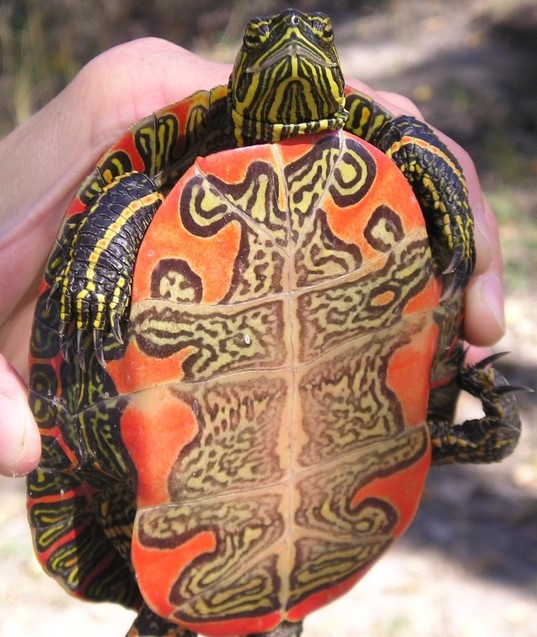
The recommendations on tank setup, companions, diet, and breeding so far are Western Painted Turtle health tips. Following them reduces the risk of common aquatic turtle diseases, such as shell rot, respiratory infections, or parasites.
Here are more details on preventing, identifying, and treating these diseases immediately.
Prevention
Chrysemys picta bellii illness prevention is possible with consistent, clean water, access to UVB lighting, and a calcium-rich diet for strengthened shell health.
Symptoms to Watch
Observe your pets daily for signs of illness, such as Lethargy, a soft shell, bubbles from the nose, or discolored shell patches. These can indicate possible infections from contaminated water, poor diet, harmful decor, or aggressive companions.
Immediately quarantine the affected turtle and treat it with the relevant medications, whether antibiotics, antifungals, antibacterial creams, or stricter regimens prescribed by turtle vets.
Lifespan and Care Over the Years
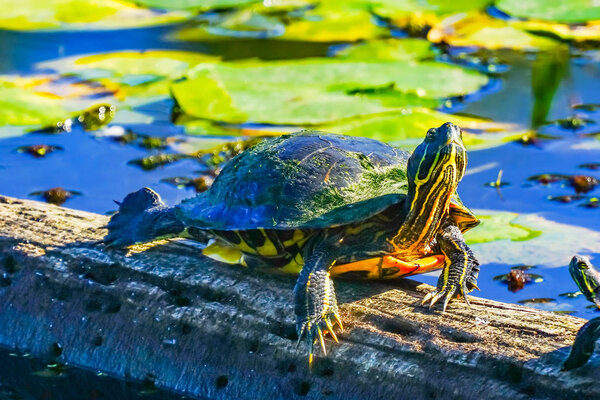
A Western Painted Turtle’s lifespan extends from 30 to 40 years with proper care. That’s why only owners interested in long-term commitment and maintaining consistency in habitat and diet should venture into this activity.
Growth Consideration
Chrysemys picta bellii’s growth and maturity determine the amount of swimming and living space they need in an enclosure. Always upgrade their tank to adequately accommodate their needs to reduce the risk of stunted growth or discomfort of any kind.
Routine Checks
Make it a habit to regularly check your pet for signs of illness and abnormal behaviors, such as her condition, appetite, activity levels, and basking behavior.
Longevity Support
Providing the appropriate enrichment in their enclosures and lowering stress triggers are long-term care for turtles.
Conclusion
Did you enjoy this Chrysemys picta bellii pet overview? Are you ready to add this beautiful, beginner-friendly pet turtle to your enclosure?
Then, let’s recap the details in this Western Painted Turtle care guide. They have
- A colorful shell with interwoven red and yellow markings
- An active personality
- Easy maintenance routine
All you need to successfully maintain this species is dedication and knowledge; this guide already gave you the second one. Let’s hear about the first in the comment box below.

